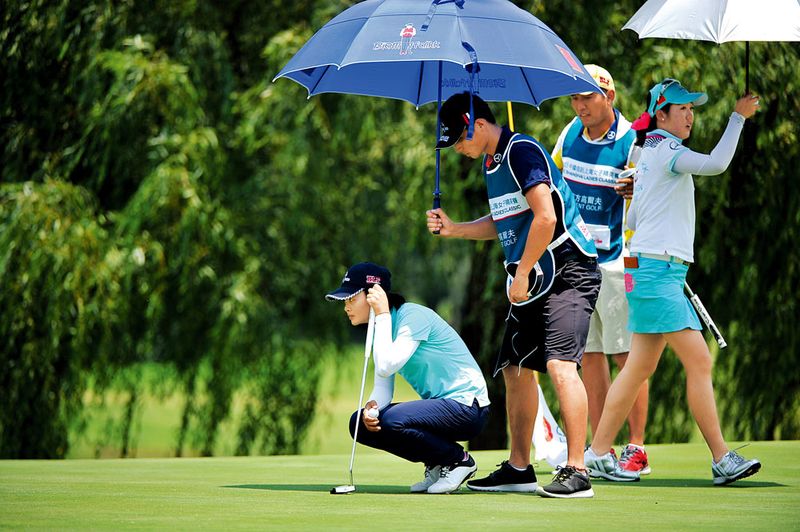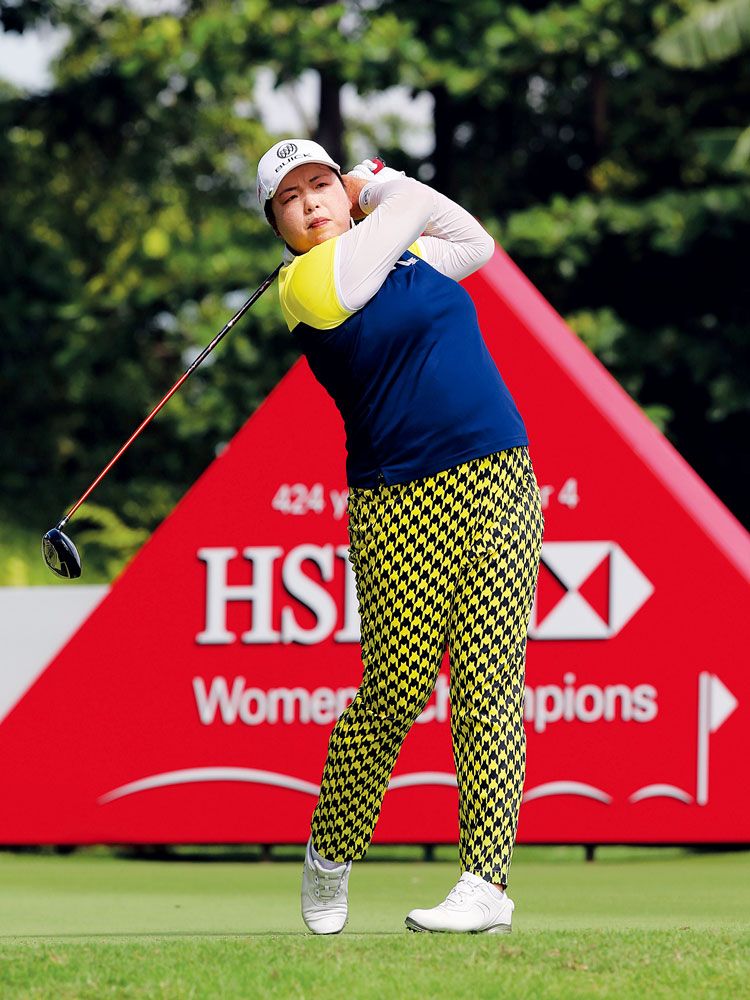The rich man’s game in the PRC
Of the many things the Chinese claim to have invented, and the list is extensive, golf is one of the more surprising ones. But, it’s not an unreasonable claim. Chuiwan (锤丸 , lit. hitting ball) has been documented in China since at least the 15th century, and there are even paintings of the Ming Dynasty (1368 – 1644) Xuande Emperor (宣德皇帝) playing the game. The paintings show colourful clothes, sticks of different sizes, flags over holes, and what appear to be assistants helping the ball hitters play the game. Sound familiar? There are even some written descriptions of what appear to be the same game going back even further, to the 11th century. Such documents have been enough for some scholars to say, yes, golf originated in China. Others have gone so far to suggest, specifically, that it was Mongol invaders who came to Europe eventually introducing the game into Scotland. A pre-cursor to golf or not, chuiwan was played in China well into the Qing Dynasty (1616 – 1911).
Ancient origins aside, when golf proper was introduced into China in the 20th century it was done so under the auspices of being a Western game, and in the first half of the century it was a practice almost entirely confined to a small number of Westerners living in foreign concessions, mainly in Shanghai. Indeed, the Shanghai Zoo is said to have been built over one such course. On coming to power in 1949, Chairman Mao, eager to end decadent and bourgeois Western practices, dubbed it a “sport for millionaires” and, naturally, banned golf, making sure China’s few courses were filled in. It was viewed as a wealthy man’s game, played by people of questionable morals—so much so that for a while it was colloquially dubbed “green opium”; whether this negated or added to its allure is unclear, but from the Mao years right up to the economic reforms of the 1980s, golf in China was largely forgotten.

The PGA Tour China-Cadillac Championship of 2014 where Chen Zihao came in second
Mao’s death changed much in China though, and new leader Deng Xiaoping fast set about reforms to see foreign investment in China, and one such way to encourage investment was golf. So the nation set about golf with considerable gusto. For a while China seemed to be going golf mad. Between 1984 and 2005, China built about 200 golf courses—a considerable pace given most of the country had no idea what golf was. From 2005 to 2010, China went into golf overdrive, trebling the number of its courses to a peak of over 600.
Spencer Robinson is the Chief Communications Officer for the Asian Golf Industry Federation and has closely followed Chinese golf as a journalist for over 30 years. “There was a time, probably going back to the late 90s, when a lot of the golf industry was looking to move their offices to China, some did in fact,” he says. “From about 1984 onward, golf in China was growing rapidly and things weren’t happening for golf outside of China. They had opened about 200 courses here, and people were getting carried away. There were estimates of 2,000 courses being built and there being 20 million players. I even wrote some over-hyped stuff myself.”
Despite this golf boom, the legalities of the golf industry in China are somewhat murky. As a case in point, a 2013 and well-received book on the subject by Dan Washburn was titled, The Forbidden Game: Golf and the Chinese Dream. Since the mid-1990s, and up until just last month, various government reports and edicts have been published by the government that seem to suggest golf is suddenly banned, then legal, then banned again, or at the very least controlled and tightly regulated. So much so, that it seems difficult to get a definitive answer on whether it is legal or not. Such flip-flopping causes considerable insecurity for golf course developers and tests the nerves of golf industry administrators.

The CTBC Shanghai Ladies Classic in 2015, held at the Shanghai Tianma Golf Club
Chinese officials trying not quell the rise of Chinese golf is not particularly new. In 1995, in an effort to control what was believed to be an emergent real estate bubble, China issued a State Council circular, stating that “new golf courses, replica ancient cities, and amusement parks” were to be forbidden—it didn’t seem to work. On January 10, 2004, the General Office for the State Council published a lengthy edict specifically banning the building of any new golf courses. Citing excessive building, the requisition of rural land, and the surreptitious building of golf courses by property developers, it stated that no new golf course should be built, those currently being built should be suspended, and that supervision, inspection, and guidance should be strengthened for current golf courses already open. In a communist country, the sport’s elitist reputation does not help either. You only have to look at the game’s global sponsors (Rolex, Mercedes, BMW, HSBC) to see that golf is targeted at a particular type of person.
Despite such bans, Simon Leach who works for the European Tour of the Professional Golf Association (PGA), as their Director of China, believes the government’s position on golf should not necessarily worry those in the industry too much.
“Golf is in its first stage in China, so there have been difficulties. Recently lots of elite courses opened fast, maybe too fast. There were lots of reports about courses not being ecological, being built illegally, elitism, and land grabbing,” he says. “Over the last 12 months the government have been monitoring it very closely. To check everything is being done properly, and now they have looked into that, they are letting golf to develop again. The government are absolutely right to do what they have done.” The cynical might argue that as someone who works in the golf industry, Leach has to sugar-coat what is going in Chinese golf, that he needs to believe that it is going to survive and is going from strength to strength.

Shanshan Feng teeing off on the third hole of the HSBC Women’s Championship at Sentosa Golf Club in Singapore
But he argues that it is his experience on the ground that shows him that golf is in a good place. “A few people in England were nervous at what was happening, but I have been here for ten years; I know how things work here and that things aren’t always what they seem,” he says. “The government is realizing it is a growth industry, so they are going to let the brands support it. It is different, to snooker, which is popular amongst all social groups, so they can just tell state opened companies to sponsor. In golf it will come from the large brands.”
“Course Correction” is a story from our newest issue, “Romance”. To read the whole piece, become a subscriber and receive the full magazine. Alternatively, you can purchase the digital version from the iTunes Store.












